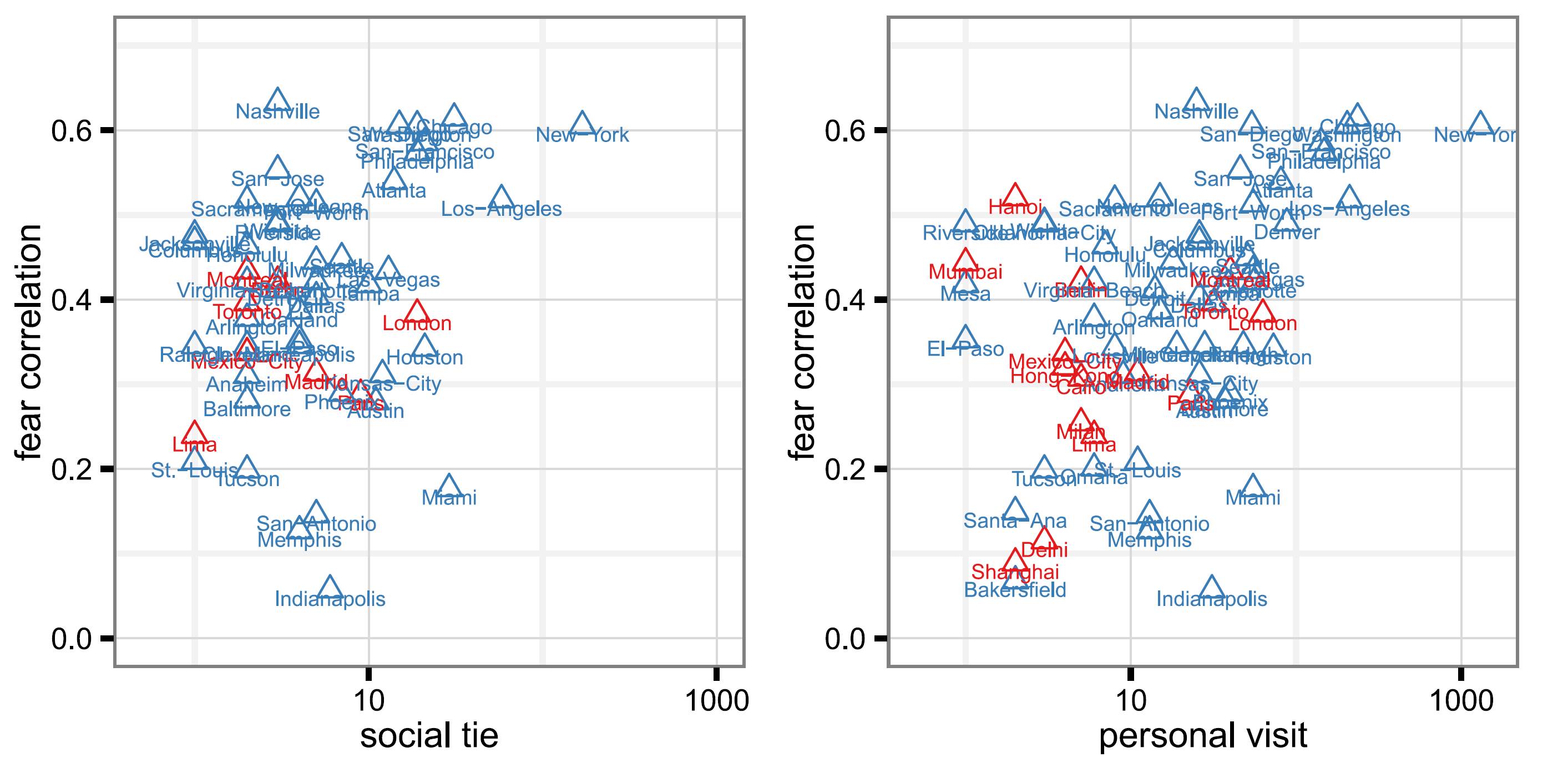Can social media reveal the emotional reverberations of terrorist attacks?
The ripple of fear, sympathy and solidarity during the Boston bombings
Yu-Ru Lin and Drew Margolin
Abstract: The Boston Marathon bombing presents a rare opportunity to study how a disruptive event can trigger inter-communal emotions and expressions – where members of one community express feelings about and support for members of a distant community. In this work, we use over 180 million geocoded tweets over an entire month to study how Twitter users from different cities expressed three different emotions: fear, sympathy and solidarity, in reaction to the bombings. We capture spikes in fear in different cities by using sentiment and time-series analyses, and track expressions of sympathy and solidarity based on the emergent use of two hashtags, #prayforboston and #bostonstrong, widely adopted after the bombings. We find first that the extent to which communities outside Boston express these emotions is correlated with their geographic proximity, social network connections, and residents’ direct, physical experiences with Boston (captured by the number of citizens who had visited Boston recently). This general effect shows interesting differences across the different kinds of emotions, however. Analyses show that the extent to which residents of a city visit Boston is the best predictor of fear and solidarity expression, as well as a strong predictor of the expression of sympathy. The expression of fear is also directly related to the expression of solidarity. Our study has theoretical implications regarding the diffusion of information and emotional contagion as well as practical implications for understanding how important information and social support can be effectively collected and distributed to populations in need

